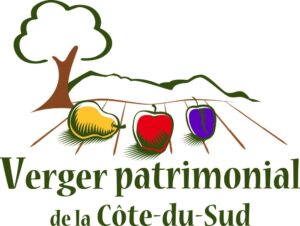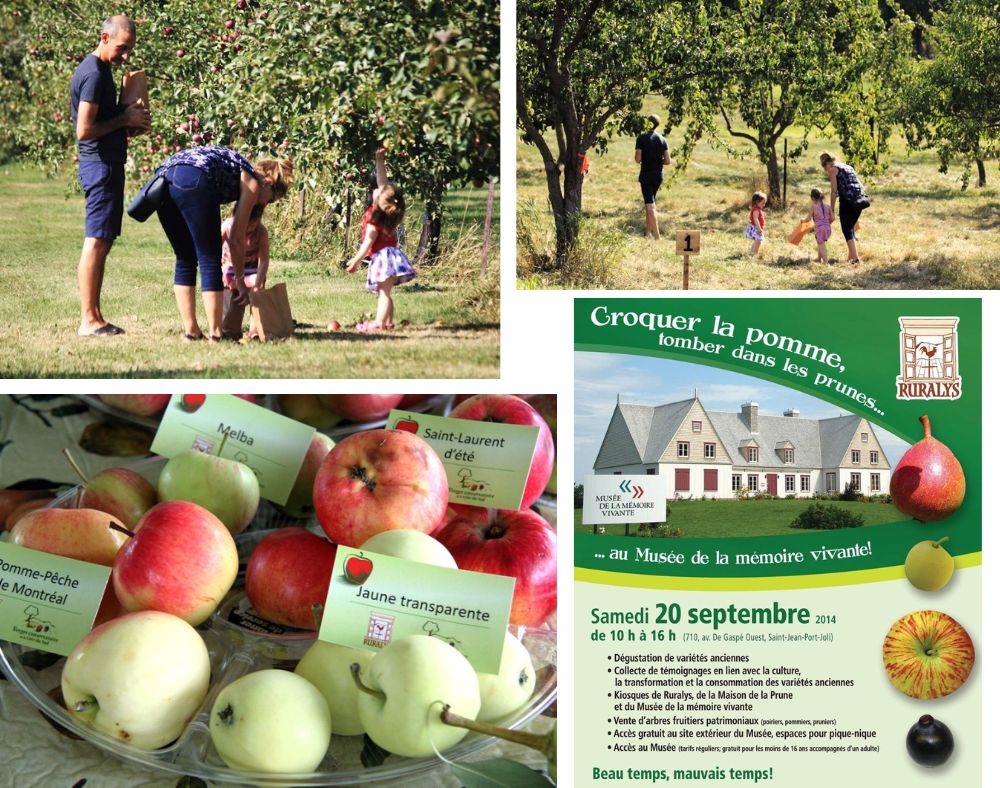Conservatory orchard
What is a conservatory orchard?
It’s like a box of souvenirs that you don’t want to risk losing. It’s precious, and you want it to withstand the test of time. It’s a place for conserving fruit trees and the memory associated with them in a representative region. An orchard of this kind is also educational since it can teach people how to care for and grow fruit trees.
 There are lots of conservatory orchards in Europe, but the one founded by Ruralys in 2004 in Sainte-Anne-de-la-Pocatière was the first in Quebec. Ruralys (2002-2020) was an organization that specialized in the preservation of Quebec’s rural heritage
There are lots of conservatory orchards in Europe, but the one founded by Ruralys in 2004 in Sainte-Anne-de-la-Pocatière was the first in Quebec. Ruralys (2002-2020) was an organization that specialized in the preservation of Quebec’s rural heritage
The main actors had a good idea of the Côte-du-Sud’s rich fruit heritage. The old trees still standing here and there sparked their interest.
Detective work
Documentary archives were searched in 2005. Then, over a two-year period, people explored the Côte-du-Sud region to draw up an inventory of old orchards and isolated fruit trees on private land.
Thirty-four varieties of old fruit trees were found. What a surprise!
The owners of these old trees were proud of them, and they enjoyed talking about them. Each name was more evocative than the next: for example, Flemish Beauty pear, Reine-Claude de Montmorency plum, Damson plum and Duchesse apple.
Grafting and planting
It’s quite a feat to have found these surviving trees. Now they need to be propagated and planted in the conservatory orchard. The technique chosen to reproduce the varieties found is known as grafting.
Sharing
Now that the plum, pear and apple trees produce enough fruit, the fall has become a time for celebration in the orchard and at the facilities operated by our partners. Fruit picking with family members, pie-making contests, identification of old varieties of fruit, and tastings showcase the richness of our agricultural heritage. The sale of grafted trees is very popular. It helps heritage varieties to reclaim land.




